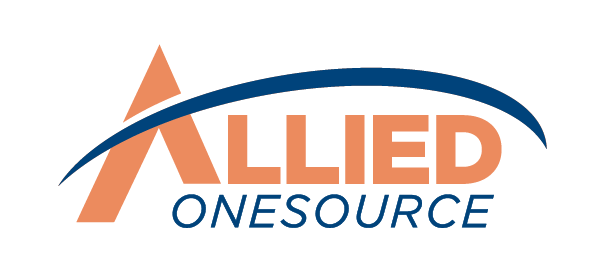Retention Beyond Raises: The Perks That Actually Keep Employees Around
You're paying salaries that are 30 percent above market rate, offering signing bonuses, and even throwing in extra vacation days. Yet your best performers keep walking out the door, and you're left scrambling to fill critical positions again and again. The traditional approach of throwing more money at retention isn't working, and it's costing you far more than you realize.
Here's the uncomfortable truth: only 20.5 percent of employees who quit cite unsatisfactory pay as their reason for leaving.¹ What's driving people away has nothing to do with their paycheck. While you're focused on salary negotiations, your employees are planning their exit because of factors you might not even recognize as problems. Understanding what keeps people around will save you from the endless cycle of overpaying for positions just to watch them turn over again.
The Real Reasons Your Employees Quit
The disconnect between what you think drives turnover and what actually happens is staggering.
Toxic Work Environment Takes the Lead
When workers quit, 32.4 percent cited a toxic or negative work environment as their primary reason.² A toxic workplace goes beyond obvious harassment or discrimination. This includes constant micromanagement, lack of psychological safety, unrealistic deadlines, and environments where mistakes are punished rather than treated as learning opportunities.
Work-Life Balance Beats Pay
Poor work-life balance ranks as the fifth reason people leave, affecting 20.8 percent of departing employees. What's more telling is that 50.9 percent of workers would actually accept lower pay in exchange for better work-life balance.³ This means employees are willing to take a pay cut to escape the demands placed on them. When flexible work arrangements become more valuable than money, the problem runs deeper than compensation.
Leadership and Management Problems
Bad managers drive people away entirely. When 27.7 percent of people quit because of their direct supervisor, your leadership team might be the biggest threat to employee retention in your organization.⁴ Poor management affects every aspect of the employee experience, from daily interactions to long-term career development.
Non-Monetary Benefits That Actually Work
Your retention strategy needs to address the real reasons people leave to ensure your employees' job satisfaction. And most solutions cost far less than you think. For a deeper dive into workforce optimization strategies, download our guide: "Maximizing ROI through Strategic Workforce Optimization."
1. Offer Remote Work Options
Remote work represents the simplest starting point for most organizations looking to improve retention without increasing payroll costs. When 40.8 percent of employees would accept lower pay for greater work flexibility, ⁵ allowing people to work from home even two days a week can dramatically improve your employee retention rate. This approach works particularly well for roles that don't require physical presence or constant in-person collaboration.
The beauty of remote work lies in its immediate impact on worker satisfaction. Employees save time and money on commuting, gain better work-life integration, and often report higher productivity levels. Meanwhile, you reduce overhead costs and access talent from a broader geographic area without the expense of relocation packages.
2. Implement Flexible Scheduling and Core Hours
Flexible scheduling gives employees control over their work structures while maintaining the collaborative benefits your team needs. Core hours policies where everyone is available from 10 AM to 3 PM, with flexibility around those times, address work-life balance concerns while maintaining essential team collaboration. This system allows parents to handle school pickups, night owls to work their preferred hours, and early birds to start their day when they're most productive.
These retention strategies cost nothing to implement but directly tackle the scheduling rigidity that pushes people toward competitors offering better work setups. When employees can align their work schedule with their personal responsibilities and natural energy patterns, they're far more likely to stay engaged and committed to your organization long-term.
3. Invest in Professional Development Budgets
Career development budgets tackle the growth opportunities that employees seek when they start exploring other job market options. When you invest in each employee's skills development, you're spending significantly less than what it costs to replace them if they leave. This investment demonstrates your commitment to their long-term success rather than just their current productivity levels.
The ripple effects of employee development extend beyond individual skill-building to create a more capable and adaptable workforce. Employees who receive training and educational opportunities feel valued and see a future with your company. They also bring new knowledge and fresh perspectives back to their teams, improving overall performance and innovation within your organization.
4. Create Clear Career Progression Paths
Clear career progression paths work hand-in-hand with development budgets by removing the uncertainty that makes employees start job searching. Without visible advancement opportunities, even well-trained employees will take their new skills elsewhere to find career advancement. Creating transparent promotion criteria and succession planning shows people they have a concrete future with your organization rather than forcing them to look externally for growth.
When employees can see a clear path forward, they're more likely to stay and invest their energy in your company's success. This transparency also helps you identify high-potential employees early and create targeted development plans that align individual ambitions with organizational needs, creating a winwin situation for retention and business growth.
5. Provide Additional PTO and Mental Health Days
Additional paid time off days, whether designated for mental health or general personal use, directly improve employee satisfaction by showing that you value their well-being beyond productivity metrics. This benefit addresses the burnout that often precedes resignation and costs far less than dealing with employee turnover after the fact. Many employees value these extra days off more than equivalent monetary compensation, making this a cost-effective retention tool.
The strategic value of additional PTO extends beyond preventing burnout to actually improving performance when employees are at work. Well-rested employees make fewer mistakes, show better judgment, and maintain higher energy levels throughout their projects. This creates a positive cycle where time off actually enhances productivity rather than reducing it.
6. Launch Cross-Functional Project Opportunities
Cross-functional project opportunities complement time-off benefits by providing variety and growth within employees' current roles. While extra PTO prevents burnout, cross-functional projects address the boredom and stagnation that also drive people away from organizations. These projects let people expand their skills while staying within your company, creating internal mobility that reduces the urge to seek new challenges elsewhere.
An effective employee who feels challenged and supported through diverse project work is far less likely to explore external opportunities. These projects also help break down silos between departments, improve communication across teams, and give you a clearer picture of each employee's capabilities and interests for future role assignments.
7. Establish Mentorship Programs
Regular mentorship programs address the leadership and connection issues that cause employees to leave while simultaneously building stronger company culture. These programs pair experienced employees with newer team members, creating meaningful professional relationships that improve retention for both mentors and mentees. Mentorship programs also help identify and develop future leaders from within your existing workforce rather than forcing you to recruit externally.
The mutual benefits of mentorship create lasting bonds that extend far beyond formal program requirements. Mentors gain leadership experience and fresh perspectives from their mentees, while mentees receive guidance, support, and institutional knowledge that helps them succeed more quickly. This knowledge transfer also helps preserve that critical 42 percent of job-specific expertise that walks out the door when workers quit.⁶
8. Implement Management Training Programs
Management training works alongside mentorship by ensuring your supervisors know how to retain employees through better leadership practices. While mentorship provides guidance and connection, proper management training gives your leaders the tools to prevent the toxic behaviors that drive people away. Training your existing managers to have meaningful career conversations and provide effective feedback costs significantly less than the 50-200 percent of annual salary you'll spend replacing someone who quits.⁷
The investment in management training pays dividends across your entire organization as better-trained supervisors create positive ripple effects throughout their teams. When managers know how to recognize employee contributions, provide constructive feedback, and support career development, they create the kind of work environment where people choose to build their careers rather than simply collect paychecks.
Allied OneSource can help you build a retention-focused workforce
Your retention challenges require more than generic solutions—they need a staffing partner who understands your industry and can help you implement these strategies effectively. At Allied OneSource, we work with organizations to build comprehensive retention programs that go beyond salary negotiations.
Whether you need help identifying the right benefits for your workforce or finding candidates who value growth and stability over just compensation, we're here to help you create a workplace where people choose to stay. Ready to move beyond the endless cycle of recruiting replacements?
Reach out today to discuss how we can help you build a retention-focused hiring strategy that addresses the real drivers of employee turnover.
References
1., 2, 3. , 4 "Future of Talent Retention: Understanding Why Employees Leave and Why They Stay." SHRM Executive Network, 14 Nov. 2024,
https://www.shrm.org/executive-network/insights/future-oftalent-retention-report-why-employees-leave.
5., 7. Dyerly, Regina. "The Myth of Replaceability: Preparing for the Loss of Key Employees." SHRM Executive Network, 21 Jan. 2025, https://www.shrm.org/executive-network/insights/mythreplaceability-preparing-loss-key-employees.
6. Assemble. "Five Hidden Costs of Employee Attrition." Forbes, 21 Mar. 2023, https://www.forbes.com/sites/forbeseq/2023/03/21/five-hidden-costs-of-employee-attrition/.











